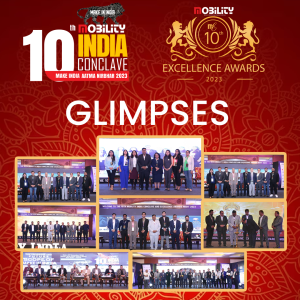5G will represent around 39 percent of mobile subscriptions in India at the end of 2027, estimated at about 500 million subscriptions. The number of smartphone subscriptions is expected to be 810 million at the end of 2021 and is projected to grow at a CAGR of 7 percent, reaching over 1.2 billion by 2027. Smartphone subscriptions accounted for 70 percent of total mobile subscriptions in 2021 and are projected to constitute around 94 percent in 2027, driven by rapid smartphone adoption in the country.

4G is expected to remain the dominant technology in India in 2027, however, the 4G subscriptions are forecast to drop from 790 million in 2021 to 710 million in 2027, showing an annual average decline of 2 percent. Thus, 4G subscriptions are expected to reduce from 68 percent of mobile subscriptions in 2021 to 55 percent in 2027 as subscribers migrate to 5G.
The reliance on mobile networks to stay connected and work from home has contributed to the average traffic per smartphone increasing to 18.4GB per month in 2021, up from 16.1GB per month in 2020. The average traffic per smartphone in the India region is the second-highest globally and is projected to grow to around 50GB per month in 2027. Total mobile data traffic in India has grown from 9.4EB per month in 2020 to 12EB per month in 2021 and is projected to increase by more than 4 times to reach 49EB per month in 2027.

States Nitin Bansal, Head of Ericsson India and Head of Network Solutions for South east Asia, Oceania and India, Ericsson”5G will serve as a socio-economic multiplier for the country and we are preparing the communication service providers for a seamless introduction of 5G in the country based on our global deployment experience , our innovative and competitive 5G portfolio as well as the 5G trials we are doing with Indian operators to showcase the possibilities with 5G.”
Ericsson recently carried out 5G trials with Airtel and Vi where it demonstrated enhanced mobile broadband and FWA use cases with 5G. Ericsson demonstrated blazing speeds of > 4Gbps with 5G during the trial with Vi in Pune . The Company also showcased the potential of 5G to revolutionize healthcare sector by enabling remote diagnostics. The highlight of the trial with Bharti Airtel was the demonstration of over 200 Mbps throughput on 3GPP-compliant 5G FWA device at distance of over 10 Km from the site. This translated into an inter-site (between two 5G sites) coverage of approximately 20 kms, thus offering the ability to provide high-speed broadband coverage even in the remotest of geographies.

Ericsson continues to introduce innovative 5G solutions that fuel the global uptake of 5G. Ericsson’s Time-Critical Communication is a software toolbox for resolving lags and interruptions in mobile networks. Ericsson also recently announced the launch of its ultra-lightweight antenna-integrated radio AIR 3268 – its latest addition to its Massive MIMO portfolio –– for easier and efficient 5G mid-band deployments in dense urban and suburban areas. At 12 kg, AIR 3268 is the lightest and smallest Massive MIMO radio in the industry. With 200W output power, the radio weighs about 40 percent less than the earlier generation, making installations easy not only on towers and rooftops, but also on poles and walls. Ericsson’s latest radio is 10 percent more energy-efficient than the earlier generation, lowering the total added power consumption when introducing 5G on mid-band.
(Courtesy: Ericsson)






